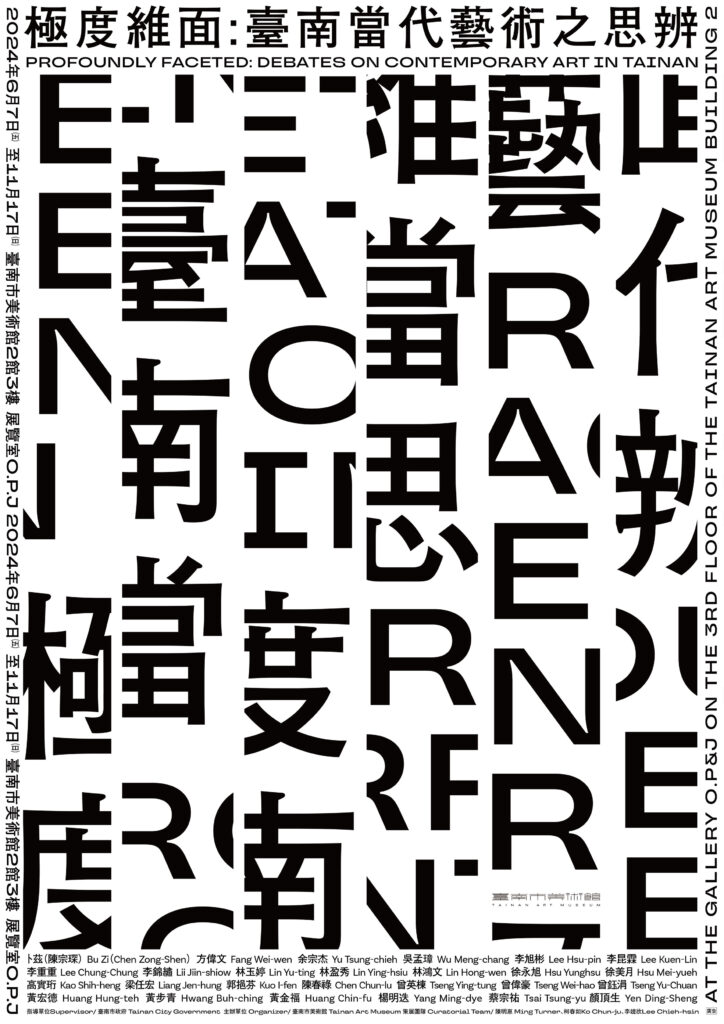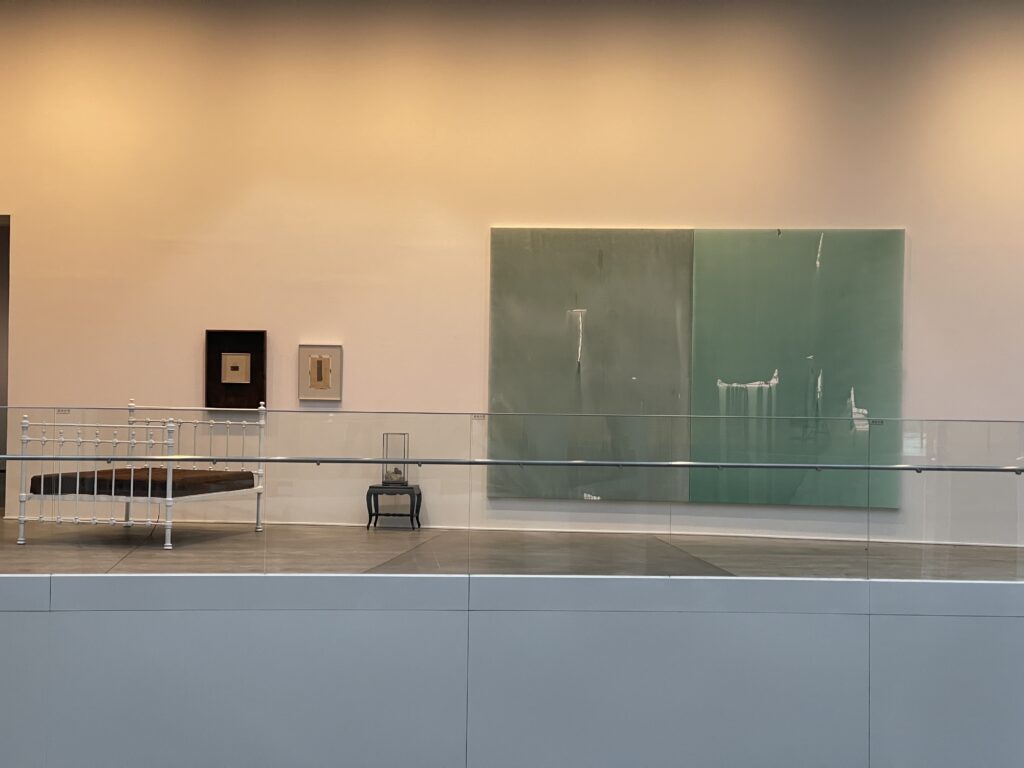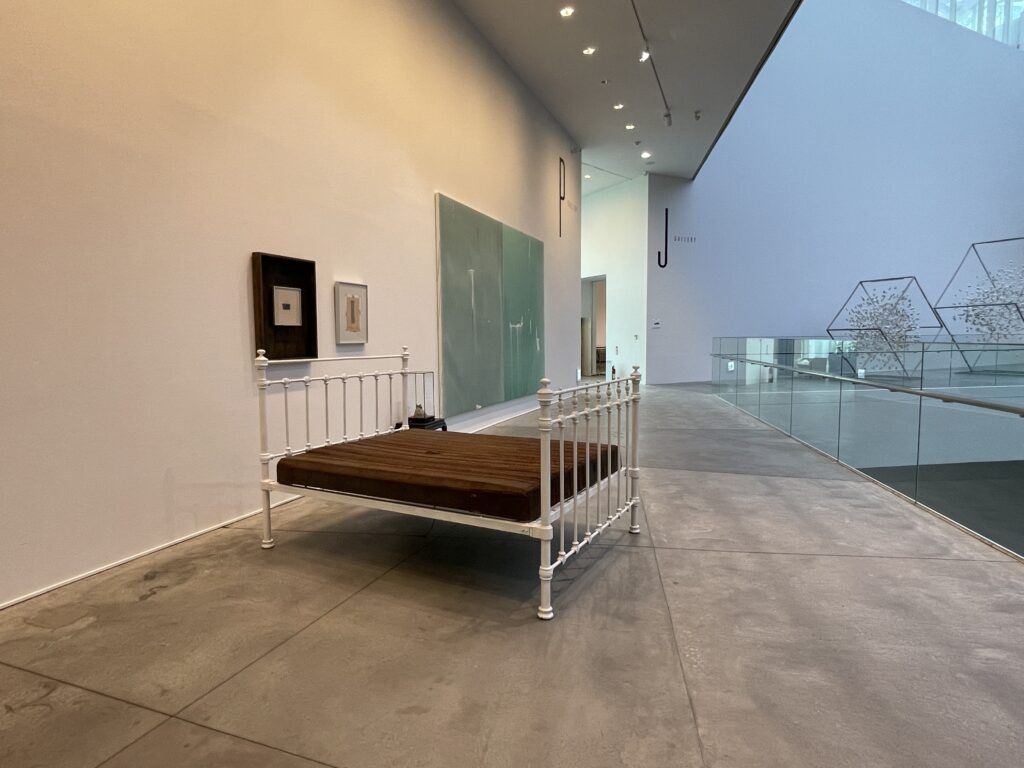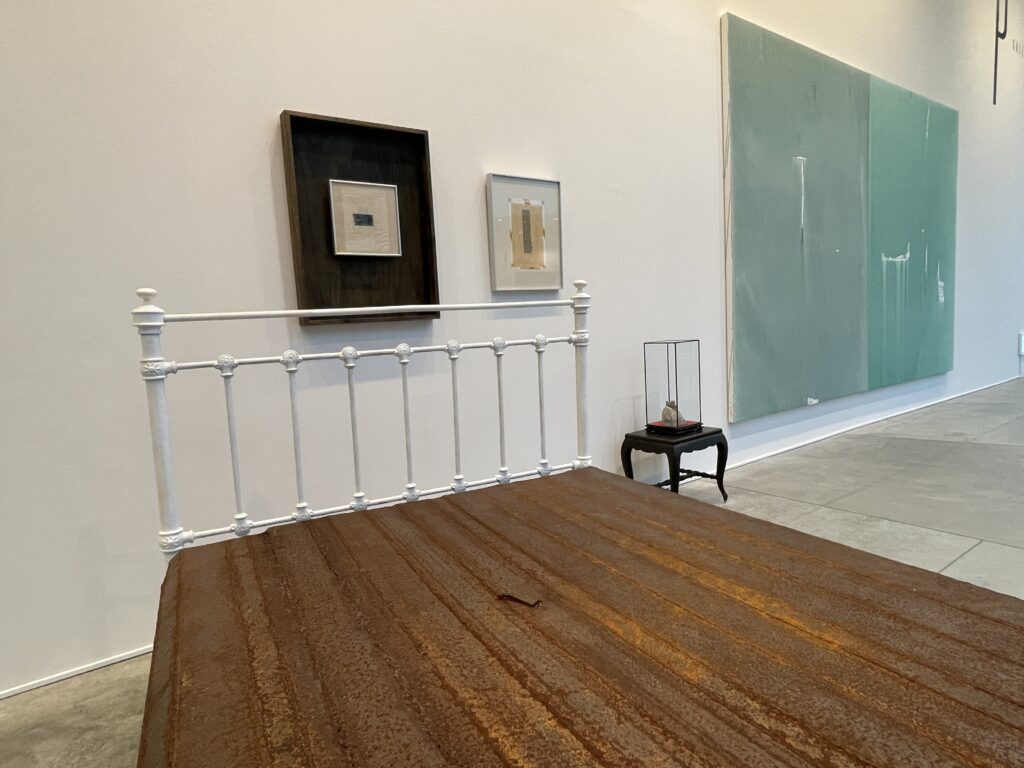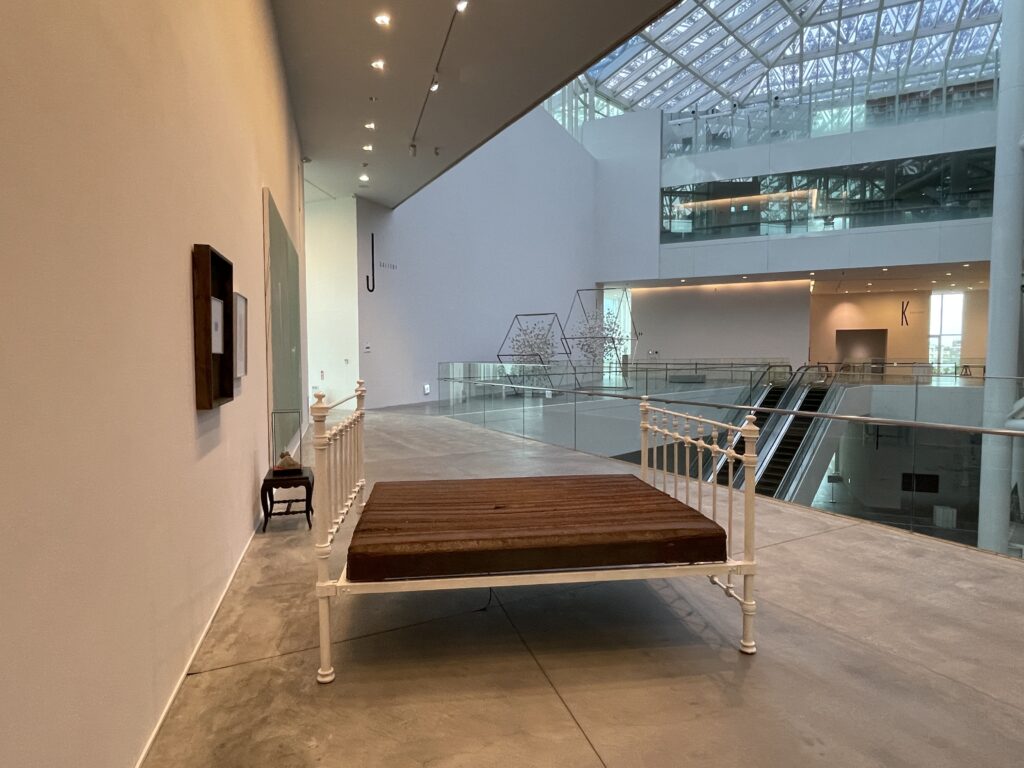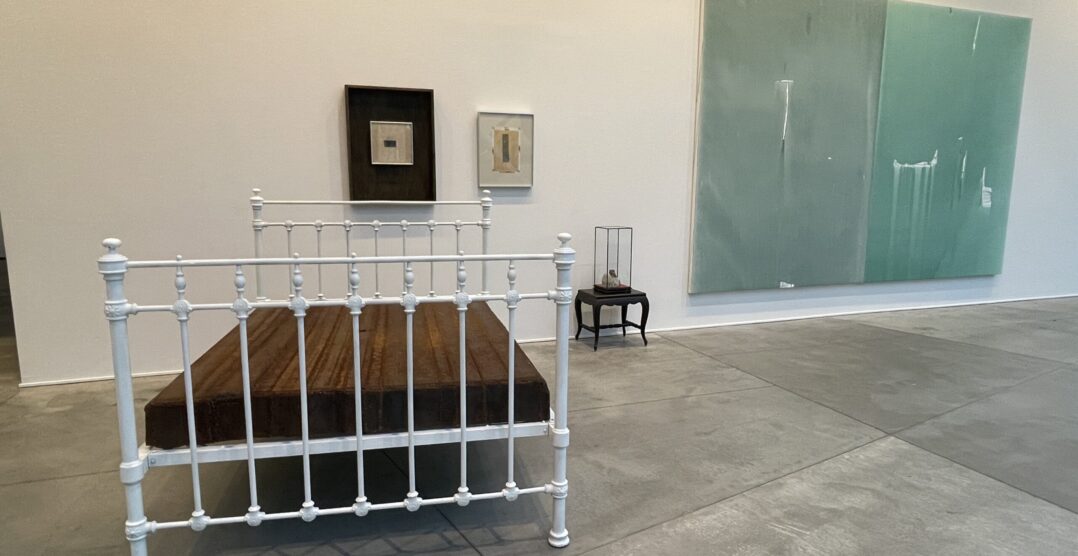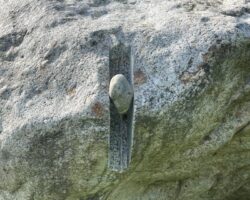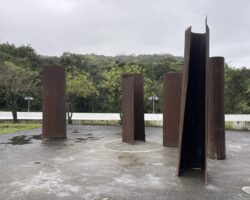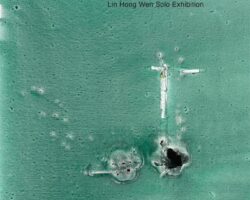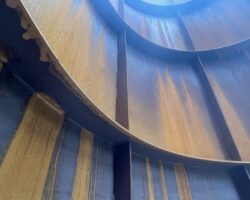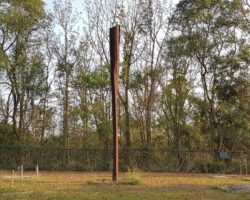2024/06/07 ~ 2024/11/17
極度維面:臺南當代藝術之思辨
Profoundly Faceted: Debates on Contemporary Art in Tainan
「深層」與「表面」常被用於指涉文化底蘊的深或淺,當我們審視自身歷史、文化脈絡,以及回顧過去臺南甚至整個臺灣,在歷經17世紀歐洲藉由經濟貿易與之後不同政權在臺灣政權輪替,以及上個世紀全球化的洗禮,與今日數位文化的影響,具「深層」的文化根源,與「表面」、快速變遷的數位媒體文化,常穿插、交錯在我們日常生活中,這樣快速變遷、不斷交替的文化現象,在臺南更具有強烈的對比與矛盾性。
“Profoundly” and “faceted” can be used, respectively, to refer to the depth and surface of culture. Examining the historical and cultural contexts of our society, it is evident that Tainan, and even Taiwan in general, aside from being shaped by globalization in the 20th century and today’s digital culture, has experienced both the consequences of European economic expansion through trade in the 17th century, and of the political regime transitions in Taiwan. The features of Taiwan’s “profound” historical roots and its “multi-faceted” culture, which reflect the rapid progress of digital media, are intertwined and interrelated in our daily lives. In Tainan in particular, the constantly changing and interchanging cultural phenomena have become even more intensely contradistinctive and contradictory.
臺南這一座城市帶有複雜且豐富的文化背景,無論是日據時期,日本政府為了發展殖民地的農產而開發農產業,殖民期間在臺南許多地區與當代平埔族群中的西拉雅族發生衝突、摩擦,進而被皇民化。接著國民黨政府於1949年遷臺,在此地的漢人、西拉雅族人又進行另一波被不同文化、政權統治的改造運動。臺南的文化、歷史與資產極其豐富,今日的臺南在可見的實體建築與物件,足可見臺南在過去數百年歷經不同文化、族群、國家的統治遺跡;更在當今全球資本主義、數位文化的影響之下,呈現出非常多元、非固定性、游移狀態的過渡性文化特質,且具歷史深度與當代文化的淺層特質,皆交雜在臺南人的日常生活中。
Tainan is a city with a complex and diverse cultural background. During the period of Japanese rule, the Japanese government developed the sugar industry in colonial Taiwan to foster its agriculture. Several conflicts and disputes occurred between people from many regions around Tainan and the Siraya of the Plains Indigenous Peoples. The administration had to intensify its policy of Japanization. In 1949, the Kuomintang (Chinese Nationalist Party) relocated to Taiwan. Another wave of assimilation from a different culture and political regime was imposed on the local Han Chinese and the Siraya people. Tainan has rich historical heritage and cultural assets, and in Tainan today, the legacy of a variety of rulers from different cultures, races, and nations, over a period of hundreds of years, can still be found in the physical architecture and countless objects. Under the influence of global capitalism and modern-day digital culture, the city has shown how its transitional culture is characterized by diversity, mobility, and ambiguity. The attributes of its profound history and multi-faceted contemporary culture coexist in the everyday lives of the people of Tainan.
「臺南」本身是一種文化載體,藝術是文化不同面向與視角的樣態,因此藝術本身亦是文化的載體,而藝術家的作品便為此文化載體呈現多元、不同的樣貌與可能。透過展出藝術作品,本展覽便呈現臺南當代藝術中「深層」與「表面」文化的不斷過度與交融。本展覽更透過相關文獻回顧與爬梳,彙整1980年代之後臺南當代藝術發展,包含具代表性的藝術團體、官方與私人藝術空間的成立,以及重要藝術展覽與活動的紀錄,呈現1980年至今臺南當代藝術發展的面貌。《極度維面:臺南當代藝術之思辨》邀請多位臺南當代藝術家,在臺南這個充滿新舊文化元素交錯的城市,展出這群藝術家對於今日混雜的文化現象,以及對現今社會、政治與大環境的觀察與批判。
Tainan itself is a carrier of culture. As art interprets different forms of culture from a variety of aspects and perspectives, it can also be a carrier of culture. Artists create works to explore the diversity, variety, and possibilities of this cultural carrier. For that reason, through artworks created by the invited artists, the exhibition manifests the continuous transitions and the integration of the “profound” and “faceted” cultures within Tainan’s contemporary art. Relevant literature has been reviewed and examined to compile the history of contemporary art in Tainan since the 1980s, including representative art groups, the founding of public and private art spaces, and the records of significant exhibitions and events. The process of how contemporary art in Tainan has evolved from the 1980s to the present date is presented in the exhibition. By inviting several contemporary artists in Tainan, the exhibition, “Profoundly Faceted: Debates on Contemporary Art in Tainan”, attempts to present their observations and critiques on the phenomena of cultural hybridity, as well as current society, politics, and the overall situation in the city, where both ancient and modern elements are combined uniquely.
子題一、記憶與敘事Memory and Narratives:
「記憶與敘事」子題呈現藝術家對於童年、記憶、過去歷史與生活的觀察,表現對過去具寧靜、安穩與烏托邦式的藝術化再現。藝術家選定在記憶裡被獨立化與象徵化的日常生活之特定事物,呈現了對於家人、故鄉、文化與產業的眷戀,作品呈現了一種平靜、美好、毫無衝突的過去與記憶,使觀者脫離現實資本主義社會的紛擾與不安全感。展出作品亦審視已消失的殖民時期農業、歷經不同歷史與政治變遷,且被藝術家所擬人化的山景,以及因離鄉而產生的飄移、不定的自我認同感。
“Memory and Narratives” presents the artists’ observations of their childhood, their memories, their past, and their personal lives. It is an artistic representation of a tranquil, stable, and Utopian past. The artists have selected specific objects from everyday life that have been individualized and symbolized in their memories to accentuate their sentimental attachments for family, hometowns, culture, and local industries. The works express a sense of the peaceful and the picturesque, where history and memories are conjoined harmoniously. Viewers are able to escape temporarily from the unrest and insecurity of the capitalistic society of reality. The works also examine colonial agriculture that has already disappeared. A mountainscape, which has been through both historical and political transitions, has been personified by the artists, while also explored is an unsettled and uncertain self-identity, which has resulted from leaving home.
子題二、批判與社會性Critique and Sociality:
「批判與社會性」子題呈現藝術家以犀利之眼,觀察日常生活與社會中的弔詭、荒謬感與孤寂性,以及當今科技生活中的數位文化特質,與對自然生態保育的省思,皆是藝術創作的題材。此子題是藝術家將外在環境議題與光怪陸離的社會現象,於藝術家理性思維與精神內部轉化後,以具批判性、展現社會性的藝術形式,引導觀眾對於我們的生活與社會環境進行省思,並進一步思考人與人之間的關係、網絡,呈現社會、人性與環境的百態與奇觀,以及對於我們的生命與生活的影響。
“Critique and Sociality” reveals the paradox, the absurdity, and the solitude present in our lives and society, through the sharp observations of the artists. Subjects selected in the artworks include the features of digital culture in modern technological life, as well as environmental conservation. The subtitle reflects how the artists process the environmental issues and bizarre social phenomena of the external world, through inner rational thinking and transforming their concepts into artworks that are both critical and questioning on social issues. Viewers are encouraged to re-examine current lifestyles and social environments, and further contemplate interpersonal relationships and networks. The works demonstrate the variety and irregularity of human nature and the environment, which may impact on our existence and life.
子題三、抽象與轉譯Abstract and Transformation:
「抽象與精神性」子題呈現藝術創作移除可以辨識的圖像,作品本身就是純粹視覺所見,作品不侷限於描繪具象的外在景物,抽象的精神世界、感官經驗等更成為藝術家創作的養分。藝術家將具體物件、人物或風景簡化及去形體化,或以幾何形狀、不具視覺形象連結的筆觸與肌理進行創作,藉由沒有特定的形體樣貌、形態或美感象徵,常呈現精神上的蓬勃大氣、自然天地的萬象,以及一種不安、不穩定、孤寂、悲愴的情感,探討物質與非物質、實空間與虛空間、存在與消逝等議題。
In “Abstract and Transformation”, all recognizable images have been removed from the artworks, which allows them to be perceived visually, with integrity. The subjects chosen are beyond the realms of physical objects or scenery; rather, abstract forms of a mental world or sensory experiences largely enrich the creations of the artists, who have either simplified and disembodied objects figures and landscapes, or have utilized geometric shapes or styles and textures without any form of visual connotations. Since no physical forms, conditions, or aesthetic symbols have been adopted, the works present a broad and robust atmosphere, correlating with natural phenomena and a sense of uncertainty, instability, loneliness, and anguish. The artists intend to explore topics relating to the material and the immaterial, real space and virtual space, and existence and disappearance.
子題四、自然與再現Nature and Representation:
「自然與再現」子題受啟發於大自然中的萬物與生態,藝術家將自然中的花草、鳥獸、走禽,以及自然中的陽光、空氣的流動與迷離的水氣,轉化為創作的題材。生活環境中的大地、土壤、海洋、岩岸與植物,歷經春、夏、秋、冬季節更替,大自然中的色澤之轉變與地貌之變動,儘管一般人習以為常,但卻是滋養藝術家的創作靈感與創作素材。此子題呈現藝術家在大自然中取景,透過藝術語彙,再現自然中的時間性、靈性,與生而為人的渺小與謙卑。
“Nature and Representation” is inspired by the natural world and the ecology. The artists have transformed flowers, plants, birds, animals, cursorial birds, sunlight, air flows, and misty views into the subjects of their works. Seasonal variations of the earth, the soil, the ocean, rocky shorelines, and the plants in our surroundings, are manifested by the changing colors and landforms found in nature. The scenes, which are common for most people, can be inspirational creative materials for artists. The subtitle shows how the artists have employed their artistic language to depict natural landscapes, and to represent the transience and ethereality of Mother Nature, in front of which, we humans remain both insignificant and humble.
